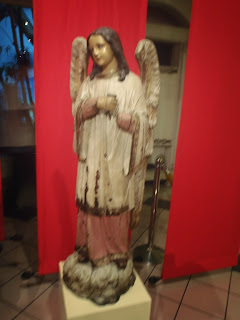FOOT: UST Museum shows religious ivory pieces to condemn blood ivory
We were lucky to have witnessed some old pieces made of ivory during our visit at the UST Museum. From July 18 to September 28, 2013, the UST Museum presents “Ars Eboris Sacri (Art of Sacred Ivory): Ivory and Controversy” at its Main Gallery.
"The exhibit will feature religious images from the 19th century and earlier. In the light of recent events involving illegally-sourced ivory and elephant poaching, the exhibit brings together a rare and fascinating collection of sacred images that are made of ivory and points out how these objects are inextricably linked to Philippine history and cultural heritage. Taking a stand against elephant poaching and the collecting and commissioning of new art from ivory, the UST Museum seeks to educate the public about existing sacred art and the context of the cultural heritage of the Church," says the UST website.
The exhibit opens on July 18, 2013 at 10:00 a.m. and will run until September 28, 2013. Gallery hours are Tuesday through Saturday (excluding university and national holidays), 8:30 a.m. to 4:30 p.m. For inquiries, please call the UST Museum at 781-1815 or 786-1611 local 8269 and ask for Mr. Red De Leon.
***
Only in June this year, the Philippines made a strong statement when it decided to destroy five (5) tons of a total of about 13 tons seized by the customs officers since Mid-1990s, with two biggest hauls in Manila's seaport and international airport in 2005 and 2009. See more report.
The National Geographic magazine has a feature on "blood ivory," an advocacy that condemns illegal wildlife killing. Ivory tusks come from elephants. More story here.
***
***
***
***
***
***
***
***
Photo of this poster was taken from UST Website.
***
Photo of the magazine cover was taken from National Geographic Website.
***















Comments
Post a Comment